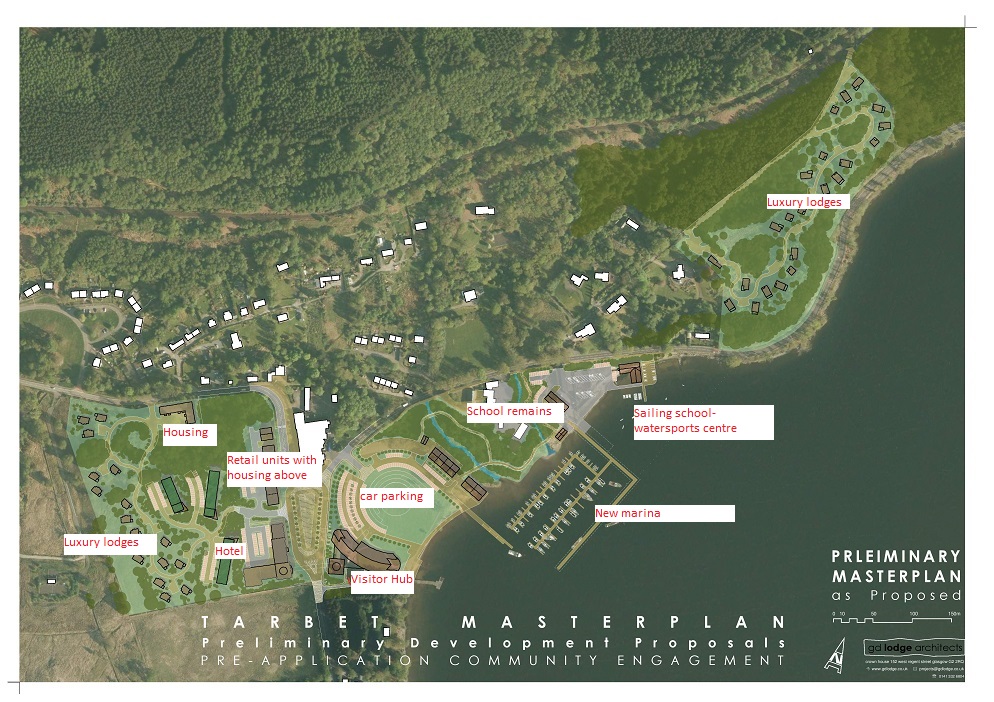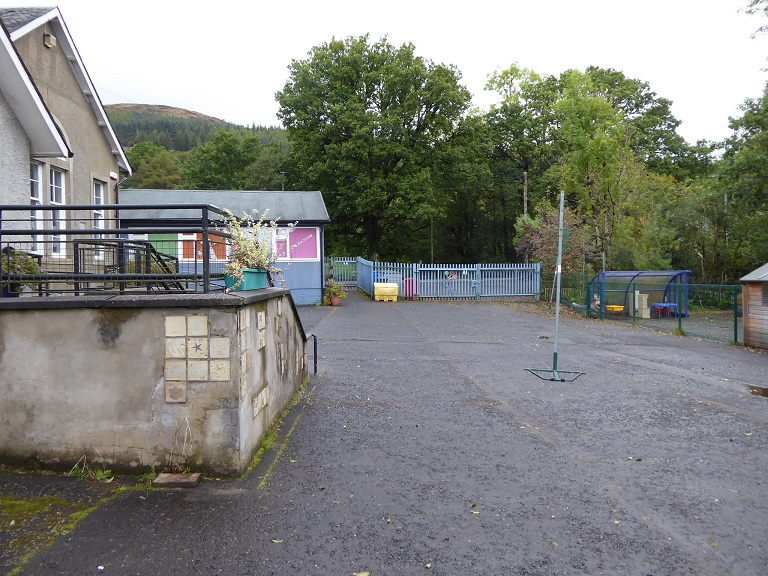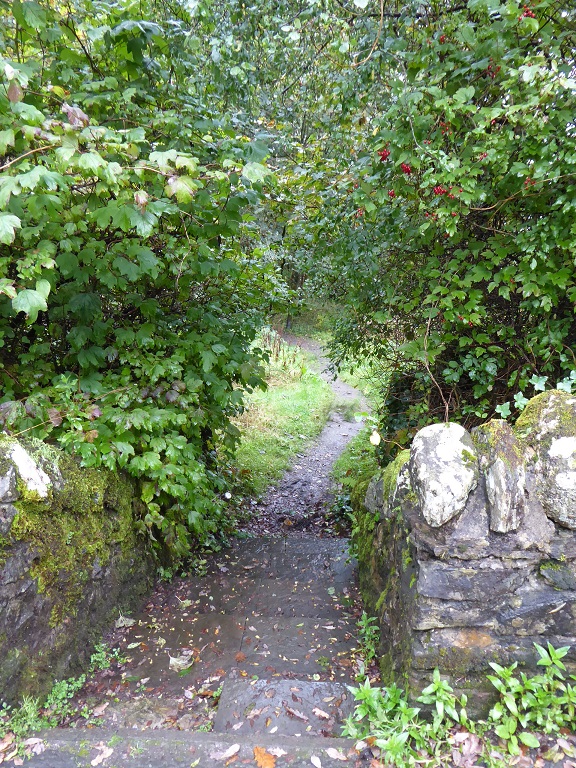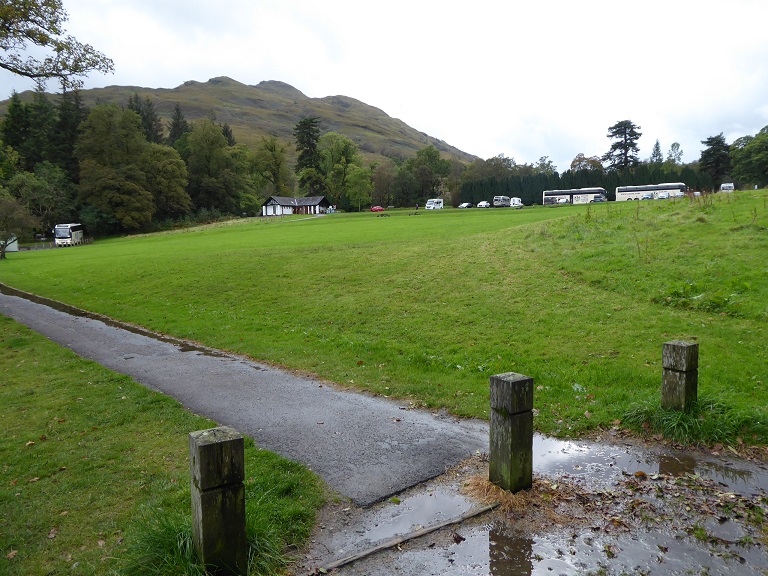
Last Thursday Moulsdale Properties Ltd held a pre-planning application consultation event on its proposals to create a large new development in the village of Tarbet (see here). I went along to the Three Villages community hall in Arrochar to have a look at their proposals and hear more. This post takes a critical look at what is being proposed and how people can respond.
The venue and support for the local community
Initially, Moulsdale Properties Ltd had proposed holding the consultation at The Shore in Balloch, a good twenty minutes drive away from Tarbet. Hopeless for the local people who would be most affected by the development. But then it turns out that David Moulsdale, who is behind both Optical Express and Moulsdale Properties, also claims to own The Shore!

Its so much easier to get your own business to hold a consultation event than fork out a few bob to hire the local meeting hall – let alone engage meaningfully with the local community.
Mr Moulsdale’s interests in The Shore is also interesting because it shows he had already developed a “business” relationships with the Loch Lomond and Trossachs National Park Authority prior to basing this development proposal around land they – and the public – own. For The Shore at Balloch is located in the former Gateway Centre, owned by the Loch Lomond National Park Authority who in turn lease the land on which its built from Scottish Enterprise. Its a tad ironic that Mr Moulsdale’s initial plans at Tarbet include proposals for a “visitor hub” when his weddings business now occupies what was once a publicly operated “hub” intended to welcome people to the National Park.
At the event I met some people from the Arrochar and Tarbet Community Development Trust who operate the Three Villages Hall. I asked them about the report in Helensburgh Advertiser that Mr Moulsdale had “supported numerous local projects including the Three Villages Community Hall Project”. They chose their words carefully but told me they had no recollection of Mr Moulsdale ever having made a financial contribution to the hall and could find no records of this, although they did say it was possible he had contributed prizes for raffles etc. Perhaps Mr Moulsdale will now publicly clarify what contribution he actually made to the Three Villages Hall? (I be delighted to publicise this on parkswatch).
The consultation event

The event itself was not bad as these things go. It consisted of a drop in session where the public could look at three maps of the proposals and ask questions of the two staff present. Both were very welcoming, open and ready to answer questions. I learned a lot just by listening to what others asked. A big plus was that the plans had been published on the internet that day(see here) – unlike Flamingo Land’s consultation at Balloch . Unfortunately, I did not realise until afterwards that the maps on the internet appear to contain less information than those available at the event (see map below). This makes it hard for anyone not at the consultation event to appreciate what is being proposed. There was also just one week allowed for follow up comments with today being the deadline:
“Further information may be obtained by emailing Craig Mitchell at craig@moulsdaleproperties.com. Persons wishing to comment on the proposals may do so at the above event and/or in writing by 3rd October 2019 to Craig Mitchell, Moulsdale Properties, 5 Deerdykes Road, Cumbernauld G68 9HF or by emailing craig@moulsdaleproperties.com.”
Craig Mitchell did, however, say at the event this was only an initial consultation on their initial concept and that they intended to consult further before any Planning Application was submitted. If you have concerns I’d still send in questions and do send any replies to parkswatch.
What is being proposed?

Compared to Flamingo Land at Balloch, there are some positives (which incidentally help illustrate just how bad that development is!):
- First, unlike the Riverside Site, not every inch of the land would be covered by chalets or some other development. There is provision for some open space within the application boundary either for the public to enjoy (e.g in the centre of the hemispherical car park proposed for the land the LLTNPA owns) or left to nature (on the corner, currently wooded, where the A83 turns sharp left to Arrochar).
- Second, part at least of the development does consist of new infrastructure which could enable people to enjoy the natural qualities of the National Park – namely the marina and watersports centre. That focus on outdoor activities is also a welcome contrast to Flamingo Land’s indoor leisure complex with water flumes etc.
The more detailed space allocations, however, are mainly at a conceptual stage so what might be involved in the visitor hub, for example, is totally unclear. While some further titbits of information did come out in response to questions – I did gather, for example, that the hotel would be mid-market not top of the range – its not possible to evaluate what is being proposed by looking at the details at this stage.
So what are the central issues at stake?
First and foremost is the sheer size of the development. If my memory is right 220 new units of accommodation, whether for housing or tourists, are proposed. That’s about the same size as Flamingo Land and will literally swamp what the National Park’s website describes as “a small village”. It will fundamentally change its character. The Park’s Local Development identified four sites for development within the village. It did not propose doubling its size.
Second is the number of jobs Moulsdale properties claim will be created and where all these workers will stay/come from. At the event we were told the development would create 220 new jobs on the basis that the standard tourist industry tool for estimating jobs created is one per each unit of accommodation. I am sceptical. Flamingo Land’s proposal was for 215 units of accommodation and they claimed this would create 80 full-time, 50 part-time and “up to 70 seasonal jobs” but provided no figures to support this.
Taking Moulsdale Properties at their word, however, the question is where would the majority of the 220 workers stay as there are nothing like that number of unemployed local people in the area? There is also a longstanding shortage of residential accommodation in the area, a consequence of many properties being bought up for holiday houses and letting purposes – including I understand by Mr Moulsdale. Very few new residential homes are proposed as part of the development. The implication therefore is that most of the workforce will have to commute in from elsewhere, at their own time and cost, adding to congestion on the roads, pollution and carbon emissions. There was nothing in the proposals about the need and opportunities to improve public transport to Tarbet. This is NOT sustainable economic development, something that the LLTNPA has a statutory duty to promote.
The size of the development accounts for many of the more specific concerns I heard voiced by local residents at the event. These included the impacts:
-
- of increased traffic (Moulsdale responded by saying they could put an underpass under the A82 to link the parts of the development on either side of it and that a roundabout might be an improvement on the current T-junction linking the A82 and A83)

-
- on the village school, which is included in the application boundary and currently makes use of the land round about for outdoor education
- on neighbouring properties
The third key issue is that this is yet another top down development. Nothing in the proposals appears driven by or designed to meet the needs of the local community or other stakeholders in the area (apart from major landowners). It was only after I left the consultation that there is NO community element to the proposal at all. Moulsdale properties have made no attempt to look at the needs of the local community in terms of housing or jobs or what local residents think is important about the area. There is nothing either driven by the aspirations of visitors. Instead, the starting point for “consultation” is a proposal dropped down from on high and driven by business interests Hence, like Flamingo Land, the core of the proposal is a hotel and lots of lodges, relatively cheap to construct, cheap to service and highly profitable. Its another example of the 1% determining what happens to the lives of the other 99%.
That’s not to say there might not be some incidental benefits to the local community. The shops that are being proposed, for example, might make life easier for local people – although they might also destroy the local shops that remain at Arrochar. A sailing school might help the local school – giving local children the chance to learn to sail – though it could also, equally well, put an end to community aspirations to develop sailing at Arrochar. The impacts of developments are complex but what is clear in this case is that any local benefits will be incidental to the proposal, not core to it.
The reason this unsatisfactory situation has arisen is that David Moulsdale has managed to buy up a significant amount of property in the village (see top map). We heard at the event that the land in the top right of the map – where luxury lodges are proposed – belongs to the two houses on the north east fringe of the village – with the implication being these are owned by Mr Moulsdale.

We also heard he had bought the strip of land between the loch shore and the A82 from Shearings, the owners of the Tarbet Hotel. The other block of land belongs to one of his other property companies. He is thus on the way to becoming the new laird for the village and can effectively, under our current system, determine what happens there.
At the same time Moulsdale Properties appears to have cultivated business relationships with the other landowners whose land is included in the development. The western edge of the site, also earmarked for lodges, is owned by Luss Estates and we were told Moulsdale Properties is in discussion about what will happen there. The old boatyard is apparently owned by Cruise Loch Lomond who operate services from the pier – it appears likely they have been promised new investment in their decaying assets if they co-operate with the development. And central to the development is the public land (whether car park, open space and visitor hub is proposed) owned by the Loch Lomond and Trossachs National Park Authority.

So it appears that the LLTNPA, strapped for cash, has turned once again to a private developer to make “better use” of its assets and been “networking” with Mr Moulsdale both at Balloch and Tarbet.
That brings me to the fourth central issue at stake with this development. LLTNPA senior staff – if not their Board – have clearly already given the nod to what would be another huge development adjacent to the bonnie banks of Loch Lomond and one that is contrary to the Local Development Plan.

Even if one accepts the LLTNPA is strapped for cash, it could have used its land as a key bargaining chip and made clear from the start that it would not agree to public land being included in any development unless this was driven by local people and other stakeholders and appropriate for a National Park. Had they done that, there would now be NO 220 place tourism development being mooted and the local community could have been empowered. Just as at Balloch, however, LLTNPA senior management appear to believe that any development, whatever its size and nature, is appropriate in a National Park and driven by a desire to put the interests of developers first.
Its well past time they were made accountable for this failure and replaced by people prepared to act as custodians of the public interest.

What an informative article. There is a development being proposed for loch Long at Portincaple which mirrors every major point that you make: the development could more than double the existing community, there has been no consultation with locals, planning procedures appear not to have been followed, road access simply cannot cope with this size and location of development etc etc. Portincaple lies outwith the National Park so it will be interesting to compare how the two developments are treated – one by the LLTNPA and one by ABC. I fear both will gain consent against all objections and as a result change the character of their locations beyond all recognition.
Moulsdale has 15 active companies listed with companies house. Five incorported in the last eighteen months and all to do with property management. development and construcion, He certainly has a vison for Scoltand, “cashing”.
There should be a public debate about the current planning rules and laws, Government consultations are a laugh, some having less than 200 respondents but we are told 96% of all Scots agree with the proposals.